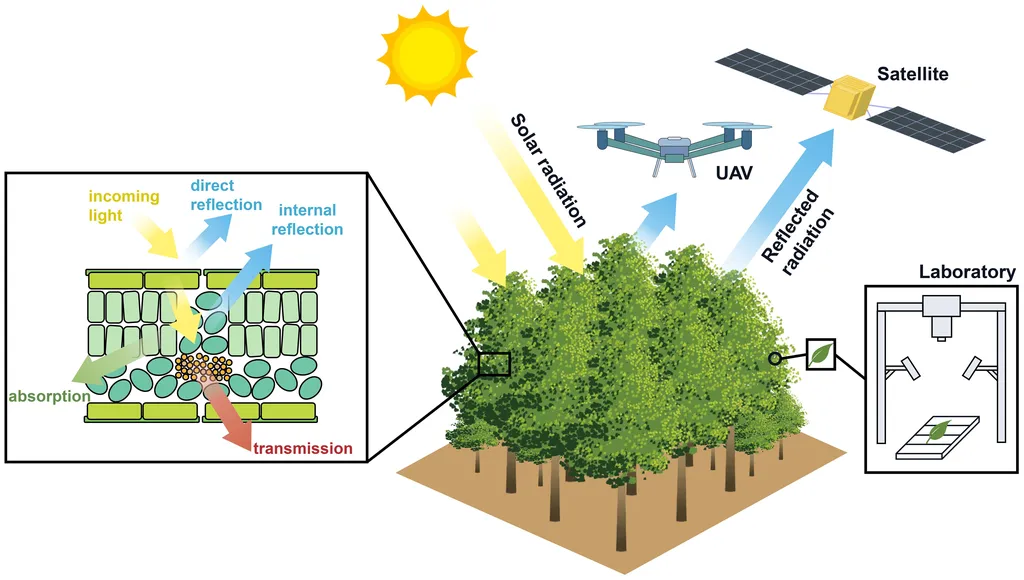In the ever-evolving world of precision agriculture, the quest for high-resolution plant imagery has taken a significant leap forward. Researchers have introduced a novel approach to enhance the quality of plant images, addressing a critical need in phenotyping, disease monitoring, and precision agriculture. The study, published in *Frontiers in Plant Science*, presents a plug-and-play high-frequency feature enhancement (HF-FE) module that promises to revolutionize how we capture and analyze plant imagery.
The challenge of acquiring high-resolution images in real-world conditions is well-known. Factors such as sensor resolution, cost, and environmental noise often result in low-quality images, which can hinder accurate analysis and decision-making. While deep learning-based super-resolution (SR) methods have shown promise, they frequently fall short in recovering fine structural details crucial for plant science applications.
Enter the HF-FE module, developed by a team led by Ling Xu from the Department of Computer and Information Security Management at Fujian Police College in Fuzhou, China. This innovative module can be seamlessly integrated into existing SR architectures, selectively amplifying high-frequency information to improve the reconstruction of subtle details like leaf venation, lesion boundaries, and texture patterns. “Our module is designed to be flexible and computationally efficient, making it a practical solution for various plant imaging scenarios,” Xu explained.
The researchers evaluated the performance of the HF-FE module on three diverse plant datasets: an oil palm dataset for large-scale plantation imagery, the UAV-based AqUAVPlant dataset for aquatic plants, and the Plant Pathology 2020 dataset for crop disease imagery. The results were impressive, with models incorporating the HF-FE module achieving consistent improvements over state-of-the-art baselines. Metrics such as PSNR (Peak Signal-to-Noise Ratio) and SSIM (Structural Similarity Index) showed notable gains, and visual assessments confirmed enhanced clarity of fine structural features, even in challenging imaging scenarios.
The implications for the agriculture sector are profound. High-quality plant imagery is essential for accurate phenotyping, which in turn supports precision agriculture practices. Farmers and agronomists can make more informed decisions about crop management, disease control, and resource allocation. “By improving the fidelity of reconstructed plant imagery, our module supports more accurate visualization and analysis, contributing to intelligent plant sensing and sustainable crop management,” Xu added.
The HF-FE module’s flexibility and effectiveness make it a valuable tool for researchers and practitioners alike. As the agriculture industry continues to embrace digital transformation, such advancements in plant image super-resolution will play a pivotal role in shaping the future of farming. The study not only offers a methodological advancement but also paves the way for further innovations in intelligent plant sensing and digital agriculture.
In the realm of precision agriculture, every detail matters. The HF-FE module is a testament to the power of innovative technology in unlocking new possibilities for sustainable and efficient crop management. As researchers continue to push the boundaries of what is possible, the future of plant imaging looks brighter than ever.

